Aloe vera, often called the “plant of immortality” by ancient Egyptians, has earned its reputation as a powerful medicinal plant thanks to its soothing, healing, and detoxifying properties. From calming sunburns to purifying indoor air, the aloe plant is a must-have in every home — not just for its beauty but for its health benefits too.
If you’re hoping to grow and maintain a thriving, healthy aloe plant, you’ve come to the right place. In this detailed guide, we’ll walk you through how to care for a medicinal aloe plant effectively, covering everything from ideal growing conditions to natural pest control and harvesting methods.
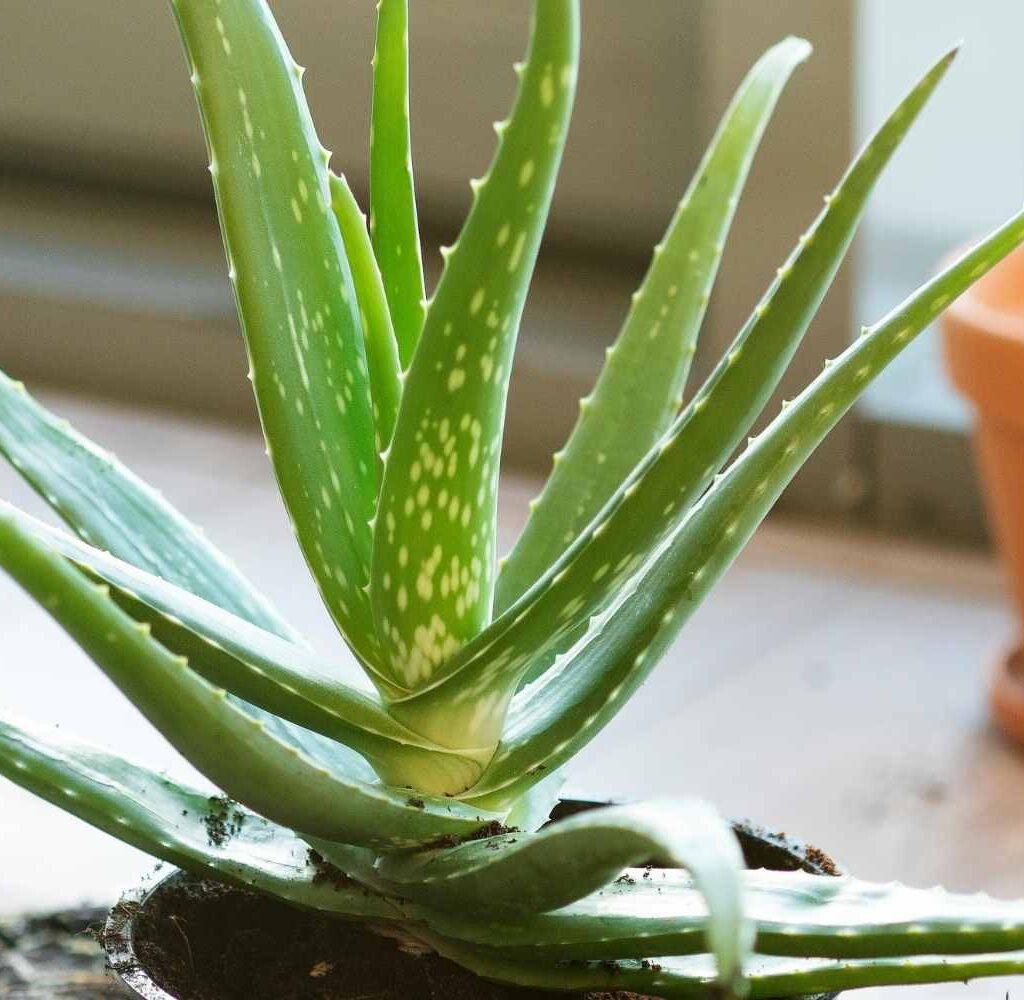
Why Keep a Medicinal Aloe Plant at Home?
Before diving into care instructions, it’s worth understanding why aloe deserves a prime spot in your living space:
- Natural healer: Aloe gel soothes burns, cuts, scrapes, and insect bites.
- Skin nourishment: Known for hydrating and rejuvenating the skin.
- Air purifier: Cleans indoor air by removing toxins like benzene and formaldehyde.
- Digestive support: When consumed safely (in small, regulated amounts), it can aid digestion.
With so many benefits, it’s no surprise that aloe vera is one of the most popular medicinal plants worldwide.
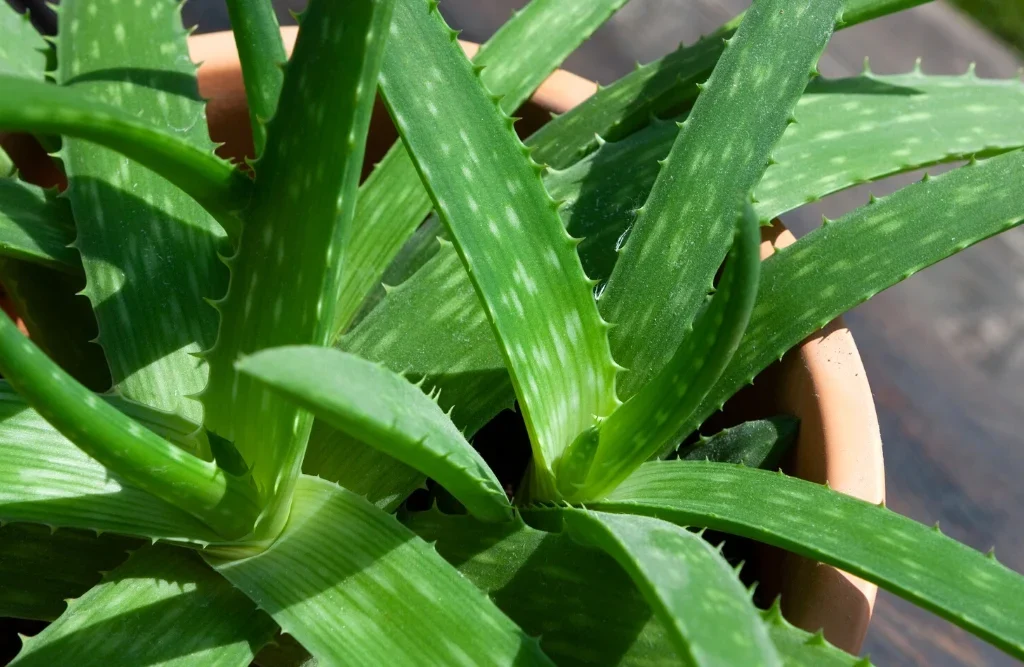
Ideal Growing Conditions for Medicinal Aloe
Since aloe is a succulent native to arid regions of Africa, mimicking its natural environment is key to growing a healthy plant.
1. Light Requirements
Aloe loves sunlight. It needs 6 to 8 hours of bright, indirect sunlight daily.
- Outdoor aloe: Prefers a sunny spot with some afternoon shade in very hot climates.
- Indoor aloe: Place it near a bright, sunny window — ideally south or west-facing. Avoid placing it in dark corners as it will become leggy and weak.
Tip: If leaves start turning brown or orange, it might be getting too much direct, harsh sunlight.
2. Temperature and Humidity
- Ideal temperature: Between 65°F and 85°F (18°C to 29°C).
- Avoid exposing aloe to temperatures below 50°F (10°C) as it’s sensitive to cold.
- Humidity: Prefers dry to moderate humidity. Avoid misting the leaves, as excess moisture can lead to rot.
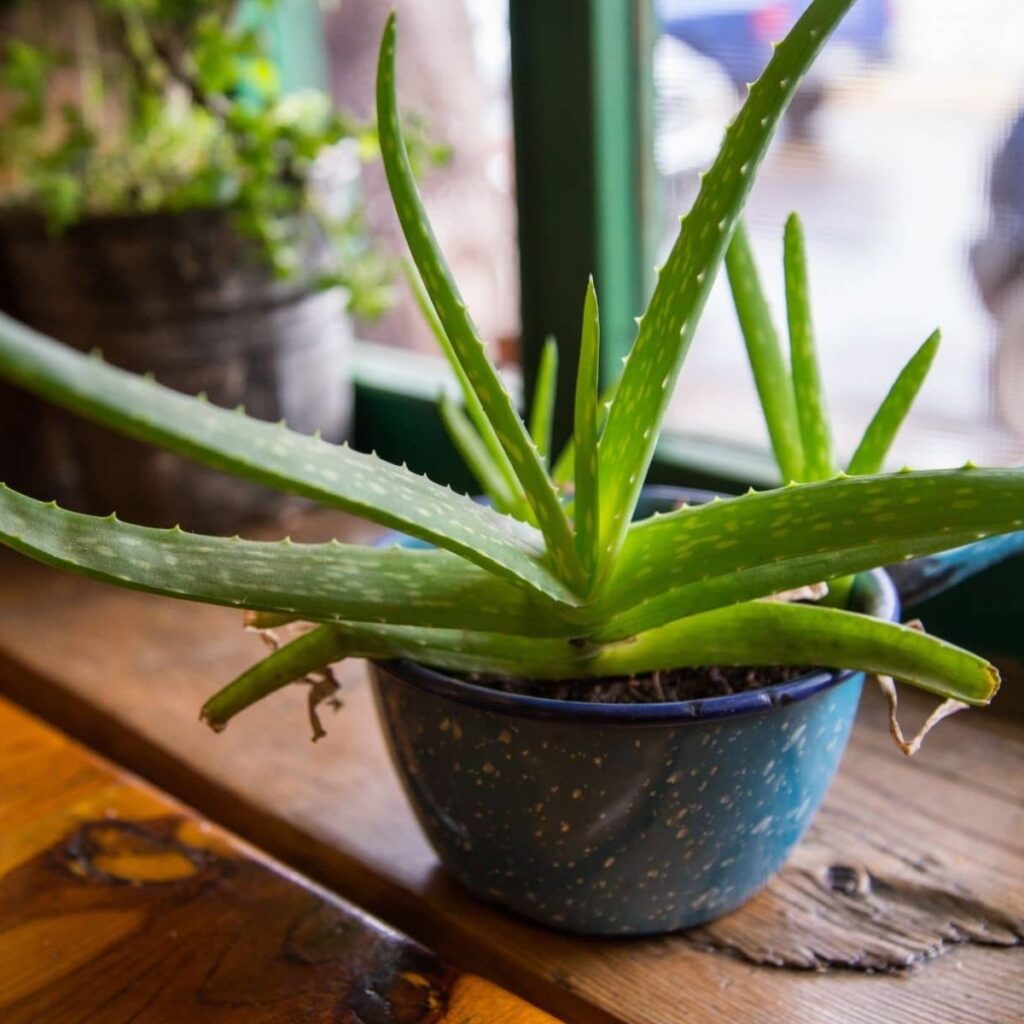
Best Soil for Aloe Plants
Aloe requires well-draining, sandy or gritty soil to prevent root rot.
Natural Soil Mix for Aloe:
- 2 parts cactus or succulent potting mix
- 1 part organic compost for light nutrients
- 1 part perlite, coarse sand, or pumice to improve drainage
Make sure your container has drainage holes to prevent water from sitting at the bottom.
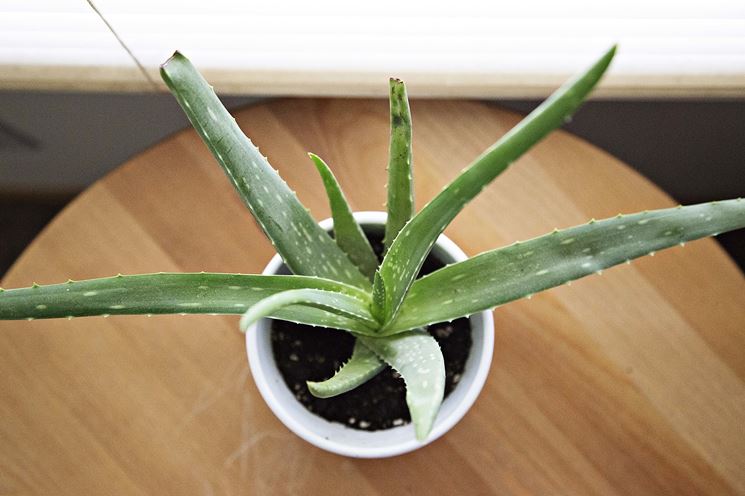
How to Water Aloe Vera Properly
The number one rule with aloe is: less is more when it comes to watering.
Natural Watering Tips:
- Allow the soil to dry out completely between waterings.
- Water thoroughly, letting excess water drain away.
- In warmer months, water every 2-3 weeks; in winter, reduce to once a month.
- Use room-temperature rainwater or filtered water to avoid chlorine buildup.
Tip: Avoid letting water sit in the rosette (center of the plant), as this can cause rot.
Natural Fertilizing for Aloe
Aloe vera is a light feeder but benefits from occasional natural fertilizing during its growing season (spring and summer).
Organic Fertilizer Options:
- Diluted compost tea: Offers a mild, balanced nutrient boost.
- Banana peel water: Provides natural potassium.
- Fish emulsion (diluted): A gentle nitrogen source.
- Fertilize every 4-6 weeks during active growth. No need to fertilize in winter.
Repotting Aloe Vera
Aloe plants grow slowly but may need repotting every 2-3 years when roots outgrow the container or offsets (baby plants) crowd the pot.
How to Repot:
- Gently remove the plant from its pot.
- Remove any dead roots or yellowing leaves.
- Replant in a slightly larger pot with fresh succulent soil mix.
- Wait a few days before watering to allow roots to settle and heal.
Tip: Use terracotta or clay pots to encourage natural evaporation and avoid soggy roots.
Natural Pest Control for Aloe
Aloe is generally pest-resistant, but it may occasionally attract aphids, mealybugs, or spider mites.
Natural Solutions:
- Neem oil spray: Mix 1 tsp neem oil, 1 tsp natural dish soap, and 1 liter of water. Spray on affected areas.
- Insecticidal soap: Mild and effective for small infestations.
- Wipe leaves with a damp cloth: Regularly clean dust and check for pests.
- Introduce beneficial insects like ladybugs in outdoor settings.
Tip: Avoid chemical sprays as they can harm aloe’s medicinal properties.
Pruning and Maintaining Aloe Naturally
Pruning keeps aloe neat and encourages healthier growth.
How to Prune Aloe:
- Remove any dried, damaged, or diseased leaves at the base using a clean, sharp knife.
- Trim dead flower stalks after blooming.
- Harvest outer leaves only — leave the inner, younger leaves to keep the plant balanced.
How to Harvest Aloe Gel Safely
Harvesting your aloe plant’s soothing gel is simple and safe when done right.
Steps to Harvest:
- Choose a large, outer leaf near the base.
- Cut it cleanly with a sterilized knife.
- Let the yellow latex (aloin) drain out — this bitter sap can be irritating.
- Peel the green skin and scoop out the clear gel.
- Use fresh gel immediately or store in an airtight container in the refrigerator for up to a week.
Tip: Only harvest a few leaves at a time to avoid stressing the plant.
Common Aloe Growing Problems and Natural Fixes
| Problem | Natural Solution |
|---|---|
| Yellow, soft leaves | Overwatering. Allow soil to dry out completely. |
| Brown, crispy tips | Underwatering or too much direct sun. Adjust watering and shade. |
| Root rot | Remove affected roots and repot in dry, fresh soil. |
| Leggy, stretched growth | Move plant to a brighter location. |
| Slow growth | Feed with compost tea or fish emulsion during the growing season. |
Benefits of Growing Aloe Naturally
Growing aloe naturally ensures you get the cleanest, most potent gel without chemical residues. Natural care also:
- Promotes stronger, disease-resistant plants.
- Protects beneficial insects and the environment.
- Saves money on commercial fertilizers and pesticides.
- Supports a healthier, organic lifestyle.
Final Thoughts
A medicinal aloe plant is more than just a houseplant — it’s a living pharmacy, ready to offer its soothing gel for burns, skin irritations, and more. With the right care, aloe is an incredibly resilient, low-maintenance plant that can thrive both indoors and outdoors.
By following these natural care tips — providing bright light, well-draining soil, occasional watering, and organic feeding — your aloe will stay healthy, happy, and ready to serve you whenever you need its healing touch.
So, whether you’re a seasoned plant lover or a beginner looking to add a beneficial green friend to your home, aloe vera is the perfect choice. Plant one today and enjoy both its beauty and medicinal magic for years to come!

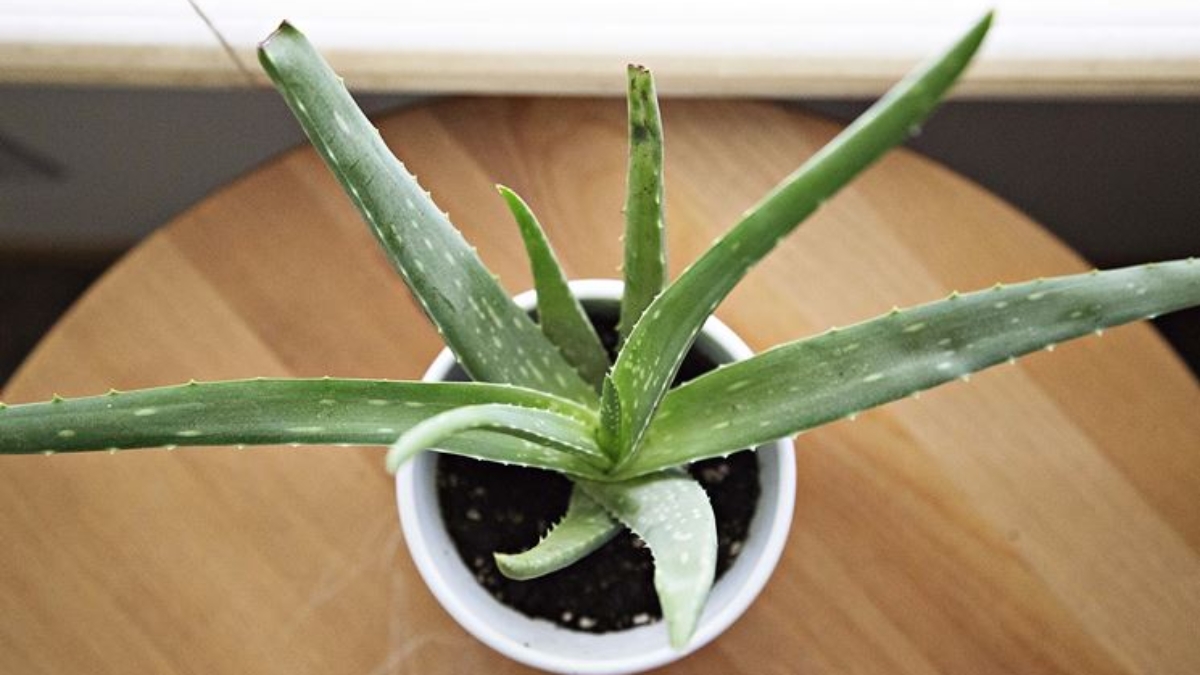




Leave A Comment